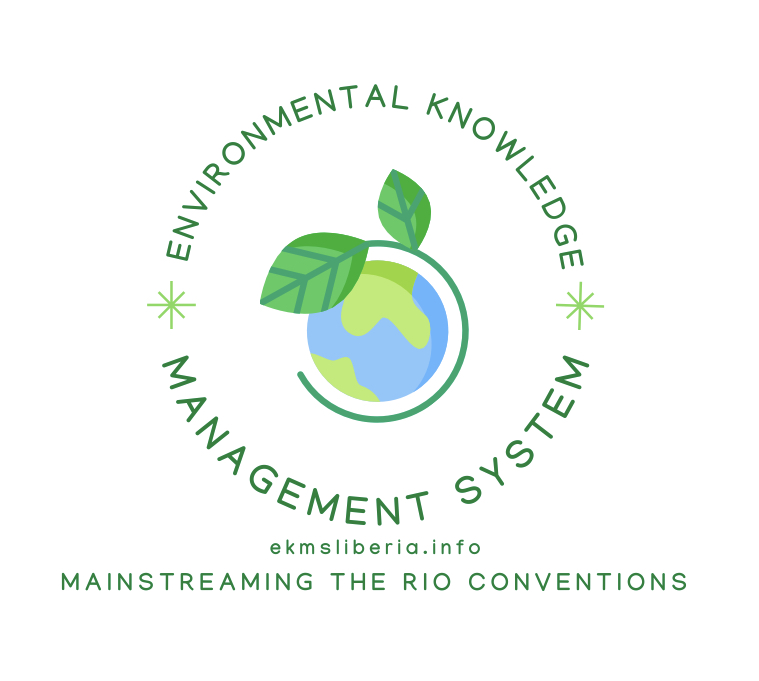The Liberian capital Monrovia is particularly vulnerable to climate effects, namely sea level rise and the increased frequency of high-intensity storms. This has resulted in coastal erosion and shoreline retreat, which threatens the sustainability of ecosystem services and directly impacts Monrovians’ fishery-based livelihoods of approximately 55,000 Monrovians, 46% of whom are women.
Therefore, in an effort to reduce the vulnerability of coastal environments/ecosystems to climate risks; the Government of Liberia (GoL), the Green Climate Fund (GCF), and the United Nations
Development Programme (UNDP) developed the Monrovia Metropolitan Climate Resilience Project (MMCRP). The Environmental Protection Agency of Liberia (EPA) is the Executing Entity for the project, and the United Nations Development Programme (UNDP) is the Accredited Entity. The MMCRP is financed through a grant from GCF and co-finance from UNDP and GoL. The core aim of the Project is to build the long-term climate resilience of coastal communities in Liberia by both addressing immediate adaptation priorities and creating an enabling environment for up-scaling coastal adaptation initiatives to other parts of Monrovia and Liberia. This will be achieved through three outputs, namely:
Output 1: Protection of coastal communities and infrastructure at West Point against erosion
caused by sea-level rise and increasingly frequent high-intensity storms;
Output 2: Institutional capacity building and policy support for the implementation of
Integrated Coastal Zone Management (ICZM) across Liberia; and
Output 3: Protection of mangroves and strengthening of gender- and climate-sensitive
livelihoods to build local climate resilience in Monrovia (Output 3).
The project is expected to enhance coastal protection, foster improved coastal management and
present local communities with diversified climate-resilient livelihoods. The project interventions of coastal protection, comprehensive, long-term planning for coastal zone management and the strengthening of local livelihoods — in conjunction with strong awareness-raising and knowledge management considerations — will address both the immediate and long-term impacts of climate change on the coast of Monrovia and facilitate the potential for up-scaling these initiatives across Liberia. The Project will also catalyze a paradigm shift in the management of Monrovia’s coastal zone towards an integrated, transformative and proactive approach that addresses current and anticipated climate change risks and which mixes both infrastructure (where necessary) and coastal ecosystems in adaptation efforts.
The Environmental Protection Agency (EPA) is the principal authority in Liberia responsible for the management of the environment and natural resources and is empowered to coordinate, monitor, supervise and consult with relevant stakeholders on all activities in the protection of the environment and sustainable use of natural resources. The EPA, in close collaboration with the Ministry of Mines and Energy (MME), Ministry of Finance and Development Planning (MFDP), the Ministry of Public Works (MPW) are implementing the MMCRP through a Project Management Unit, based at the EPA. The UNDP, as an Accredited Entity to the GCF are providing oversight and quality assurance services to the MMCRP. The project Management Unit (PMU) is responsible for the implementation of the Project with support from the EPA and UNDP.
Under Output 1, the project intends to construct a combination of coastal protection structures (a
revetment and a breakwater) and associated amenities (a green promenade and trees) to protect West Point against climate-induced sea level rise and high-intensity storms. Therefore, a conceptual design was prepared as an output of the Engineering Sub-assessment done during project preparation.
However, to mitigate any adverse flooding effects due to the construction of the aforementioned
structures, a project site-specific hydro-engineering study of West Point was conducted by qualified engineers to ensure that the risks of potential localized and broader flooding are incorporated in the detailed design of the defense structure. The final technical design was based on the existing conceptual design and considered best practices and lessons learned from other coastal protection interventions in Monrovia and elsewhere. This final design has also been informed by detailed geo-physical and social assessments, including an options analysis of nature- based solutions and other hard infrastructure options, and solicited the inputs of communities. Preventing both heavier water loads in the Mesurado Estuary and saline intrusion into freshwater aquifers were critical considerations in this initial design of this intervention. Notwithstanding, a critical aspect of ensuring a successful implementation is to have a realistic construction plan. Hence, a construction plan was developed after producing the detailed technical designs. The construction plan has identified all necessary inputs, construction packages, procurement procedures, contracting guidelines, relevant legislation, environmental and social safeguards (ESS) processes and gender- responsive stakeholder consultations. The final detailed technical design and construction plan considered input from community and government stakeholders and were validated.
An Environmental and Social Impact Assessment (ESIA) was conducted concurrently and informed the final detailed design of the revetment. The development of the Livelihood Restoration Plan (LRP), a sub-plan of the ESIA meant to mitigate the risk of economic displacement due to the construction, is about to commence and will be completed before construction starts. This is in accordance with the requirements of Liberian law, the funded activity agreement (FAA) for the project, and the project document; and follows the recommendations of the Environmental and Social Assessment Report (ESAR) which was submitted along with the funding proposal.
The complete tender package has been finalized and is being used to recruit a suitable international engineering firm to construct the coastal protection structures and associated amenities. See link below for more information:

